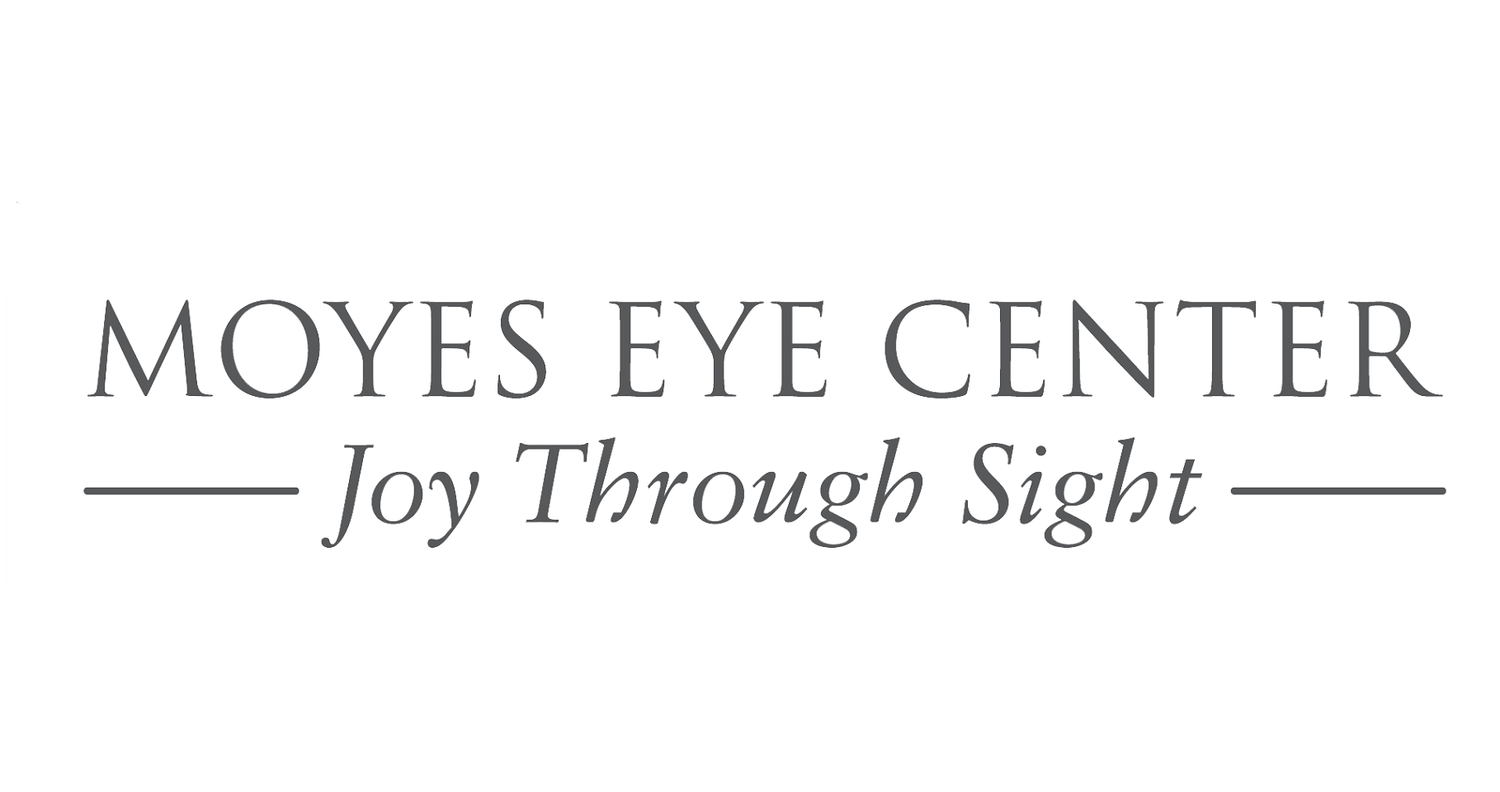What is Glaucoma?
Glaucoma is a disease that damages the optic nerve of the eye. The optic nerve is the “cable” that takes what our eye sees and sends the signal to our brain. 3 million people are estimated to have glaucoma, BUT only half of them are aware they have the disease. Early in the disease there are no symptoms and for that reason glaucoma is often referred to as “the silent thief of sight”.
The damage to the optic nerve is progressive without treatment and the loss of vision is irreversible. For this reason it is important to be screened for glaucoma in hopes of identifying the disease in its earliest stages and initiate treatment to preserve vision.
What are the risk factors for glaucoma?
Glaucoma is a multifactorial disease with several risk factors associated:
- Age: Glaucoma is found more often in those over the age of 50.
- Race: African Americans are 3-4 times more likely to develop glaucoma. Hispanics are 1-2 times more likely to develop glaucoma.
- Intraocular pressure (IOP): Increased IOP is a risk factor for developing glaucoma. Understand that IOP can have diurnal fluctuation and may be consistently “normal” at certain times during the day, yet abnormal at other times during the day.
- Family history: Patients with immediate family members who have Primary Open Angle Glaucoma (the most common type) are 4-9 times more likely to develop glaucoma.
- Corneal thickness: Patients with thinner corneas are at a greater risk to develop glaucoma.
- Steroid usage: Topical steroids used chronically have been shown to increase IOP in a certain percentage of the population. Patients who take topical steroids on a chronic basis should have their eye pressure checked throughout the year.
- Eye injuries: Blunt injuries to the eye that result in damage to the iris or drainage angle of the eye can lead to increased IOP. The increased IOP can occur immediately following the injury or sometimes 10-20 years following the incident.
What are the different types of glaucoma?
There are several different types of glaucoma, all of which have progressive optic nerve damage and visual field loss in common. Below is a list of the more common types:
Primary Open Angle Glaucoma (most common type): This is the most common type of glaucoma in the United States. It happens gradually, where the eye does not drain fluid as well as it should (like a clogged drain). As a result, eye pressure builds and starts to damage the optic nerve. This type of glaucoma is painless and causes no vision changes at first. Some people can have optic nerves that are sensitive to even normal eye pressure. Regular eye exams are important to find early signs of damage to the optic nerve.
Angle Closure Glaucoma / Narrow Angle Glaucoma This type of glaucoma occurs when someone's iris is very close (or even blocking) the drainage mechanism within the eye. One can think of this like a piece of paper sliding over a sink drain. When the drain gets completely blocked, the eye pressure can rise very quickly. This is called an acute attack and is a true eye emergency. Angle-closure glaucoma can cause irreversible blindness if not treated right away.
What are the symptoms?
Primary Open Angle Glaucoma:
- Has no "real" symptoms until late in the disease, when patients can notice patchy blind spots in their peripheral vision
- Glaucoma vision simulator: https://www.aao.org/eye-health/diseases/glaucoma-vision-simulator
Angle Closure Glaucoma:
- Severe eye pain.
- Nausea and vomiting (accompanying the severe eye pain)
- Sudden onset of visual disturbance, often in low light.
- Blurred vision.
- Halos around lights.
- Reddening of the eye.
- Patchy blind spots in your side (peripheral) or central vision, frequently in both eyes.
- Call your doctor immediately if these are present or you might be at risk for permanent vision loss.
Glaucoma Treatment
Glaucoma Medications
A number of effective medications exist to treat glaucoma. Most commonly topical eye medications (“eye drops”) are prescribed on a daily schedule to be used 1-2 times per day depending on the medicine. Oral medication to lower eye pressure can be prescribed although these options are usually used as second line agents or in short term emergency situations. Your doctor will set a “target eye pressure” prior to treatment and will usually begin a single glaucoma medication. After using the medication for 3-6 weeks, your doctor will recheck your eye pressure to see if the target eye pressure has been reached.
Glaucoma Laser Treatment
Laser Peripheral Iridotomy
(LPI) is a laser treatment applied to the iris of the eye for patients who have narrow drainage angles and are at risk of having an angle closure attack. Again, this laser treatment is for the treatment of Narrow Angle Glaucoma or used emergently for patients having a Narrow Angle Glaucoma Attack.
Selective Laser Trabeculoplasty (SLT)
SLT is a light therapy applied to the drainage angle of the eye. Topical numbing drops are used to anesthetize the eye and the treatment takes just a few minutes to complete. The laser treatment is effective in reducing the pressure in the eye in 80-90% of patients. The effect can wear off with time and your doctor may recommend a repeat treatment.
Glaucoma Surgery
Several surgical procedures can be used to reduce eye pressure in the treatment of glaucoma. Historically, surgical options for glaucoma have been considered the third line of treatment after topical medicines or, laser treatments administered in the clinic. However, newer surgical options termed Micro Invasive Glaucoma Surgery or Minimally Invasive Glaucoma Surgery (MIGS) are being considered first line options for some patients, especially in conjunction with cataract surgery.
MIGS
iStent inject
- The iStent inject is a micro-shunt device that creates two bypasses, or openings between the front part of your eye and its natural drainage pathway to increase the flow of fluid. The improved outflow results in eye pressure lowering.
- Video of Dr. Bettis performing iStent inject: click here
- More information regarding iStent inject: click here
Trabectome
- The Trabectome uses electrocautery, irrigation and aspiration to create an opening in the natural outflow pathway of the eye, thereby lowering eye pressure.
Kahook Dual Blade
- The Kahook Dual Blade is used to perform a goniotomy which opens the path of fluid outflow to lower eye pressure.
- More information regarding Kahook Dual Blade: click here
XEN Gel Stent
- The XEN Gel Stent (pronounced "Zen") is a surgical implant that creates a small channel in the eye to drain fluid and help lower eye pressure.
- More information regarding XEN Gel Stent: click here
Hydrus Microstent
- The Hydrus Microstent is a surgical implant that is placed in the drainage area of the eye to increase fluid outflow and reduce eye pressure.
- More information regarding Hydrus Microstent: click here
Additional information regarding MIGS can be found here
Ahmed Tube-Shunt Surgery
- The Ahmed Tube-Shunt or Valve is a type of aqueous shunt used to reduce eye pressure by draining the fluid from inside the eye to a small collection area (bleb) on the outside surface of the eye.
- There are differences in the design of all tube shunts that your doctor will consider to customize to your particular eye.
Baerveldt/Molteno Tube Surgery
- The Baerveldt Tube and The Molteno Tube are both types of aqueous shunts used to reduce eye pressure by draining the fluid from inside the eye to a small collection area (bleb) on the outside surface of the eye.
- There are differences in the design of all tube shunts that your doctor will consider to customize to your particular eye.
Glaucoma Filter Surgery
Trabeculectomy
- Trabeculectomy is a surgical filtration surgery that lowers the pressure in the eye by creating a surgical "flap" or "trap door" to allow fluid to slowly drain from the inner eye to a small collection area (bleb) on the outside surface of the eye.
Laser Surgery
Endocyclophotocoagulation (ECP)
- Endocyclophotocoagulation is a surgical procedure that applies laser to the fluid making area of the inner eye. This treatment results in a decreased production of eye fluid and thus, reduced eye pressure.
MicroPulse P3 cyclophotocoagulation (MP3) with G6 Probe
- Micropulse P3 cyclophotocoagulation is a non-incisional surgical procedure that applies laser to the fluid making area of the inner eye without the need of entering the eye. This treatment results in a decreased production of eye fluid and thus, reduced eye pressure.
Our Glaucoma Team
Lindsey McDaniel, M.D.
Glaucoma, MIGs and Cataract Surgery
Abraham J. Park, MD
Glaucoma, MIGs and Cataract Surgery




